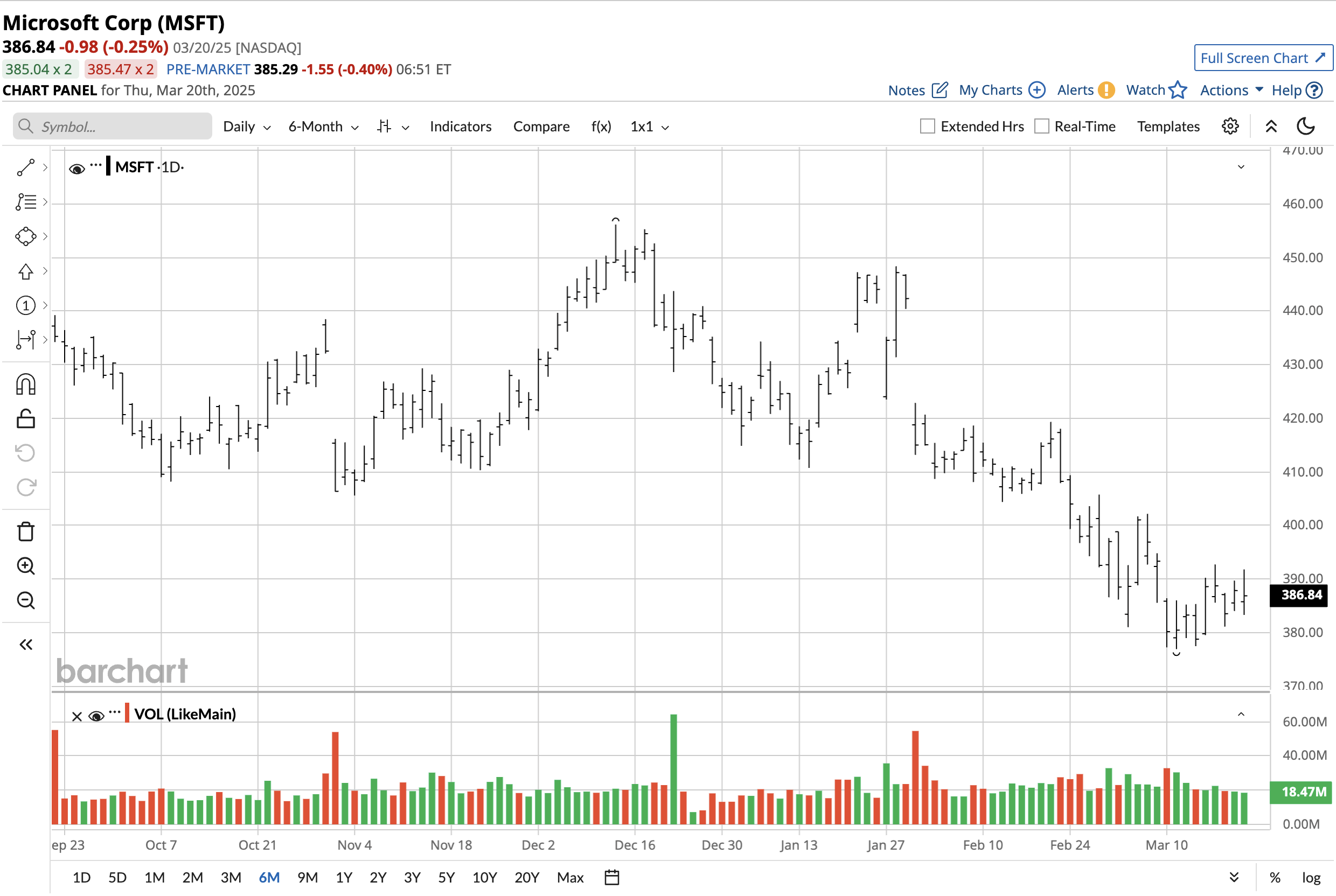/Microsoft%20Corporation%20logo%20on%20sign-by%20Jean-Luc%20Ichard%20via%20iStock.jpg)
Microsoft (MSFT) is a mega-cap tech giant and a household name, thanks to its consumer-focused hardware and software offerings. The stock has delivered exponential gains since Satya Nadella took charge in 2014. Microsoft deserves credit for kickstarting the AI revolution with its massive investments in OpenAI. OpenAI has been using Microsoft’s Azure cloud platform and the general hype surrounding AI has boosted the company significantly.
Of course, things haven’t gone perfectly smoothly. Microsoft’s Bing failed to gain any meaningful market share despite AI integrations, and its investments in OpenAI are likely well over a decade away from being profitable. And with the AI narrative under fresh scrutiny, MSFT stock has declined 17.9% from its 52-week peak and is down 9% in the year to date.
Unfortunately, MSFT hasn’t had anything else flashy to show. It did reveal a new quantum computing chip, but that wasn’t enough to drive hype since commercial viability is still a long way away.

Why MSFT Stock Declined
Most tech stocks have declined in the recent market correction, which was triggered by weak macroeconomic figures and tariff concerns. For Microsoft, concerns over a cloud slowdown and a lack of AI profitability, especially after Microsoft canceled some data center leases, have exacerbated the pain. Investors saw this as the company backtracking from its earlier commitments of investing $80 billion in AI this year.
Microsoft's stock also fell significantly after its fiscal Q2 2025 earnings report on Jan. 29, 2025, despite beating analyst expectations for revenue and EPS. The main issue was the slowdown in cloud growth. It missed estimates by 0.8%, and its capital expenditure forecast was also higher than expected.
The stock now trades at a 30x forwad earnings. Historically, MSFT stock has changed hands at around 32.6 times earnings. The difference now is that Microsoft is a maturing company whose growth rates have slowed.
Should You Buy the Dip in MSFT Now?
Many believe that MSFT stock could decline further in 2025 as it did in 2022. The trends point to that, considering Microsoft has considerably broken below the 200-day moving average. The last time this happened was in 2022, and the stock sold off considerably.

No one knows how long the selloff will last. So instead of panicking, investors can treat it as a buying opportunity in Microsoft. That is because MSFT stock has bounced back every time it has experienced a similar dip. It is a company that white-collar businesses can’t get enough of. Windows is still the most dominant operating system, and Microsoft Office gives the company plenty of pricing power to boost earnings.
The stock has a mean price target of $506.63 implying roughly 31% upside potential. Of the 44 analysts in coverage, 42 have “Strong Buy” or “Moderate Buy” ratings, while two have “Hold” ratings.
If you want to accumulate shares for the long run, MSFT stock shouldn’t disappoint regardless of when you buy. But if you’re looking at the short term, there’s a good chance MSFT will go lower from here due to weakening technical signals.
Investors paid as low as 24 times earnings for the stock during the 2022 lows. A similar selloff may lead to another 20% decline. I’d rate it a “Hold.”

On the date of publication, Omor Ibne Ehsan did not have (either directly or indirectly) positions in any of the securities mentioned in this article. All information and data in this article is solely for informational purposes. For more information please view the Barchart Disclosure Policy here.




/Tesla%20Inc%20tesla%20by-%20Iv-olga%20via%20Shutterstock(1).jpg)
/Stickers%20with%20AMD%20Radeon%20and%20Nvidia%20GeForce%20RTX%20graphics%20on%20new%20laptop%20computer%20by%20Piotr%20Swat%20via%20Shutterstock.jpg)

/Nvidia%20logo%20by%20Konstantin%20Savusia%20via%20Shutterstock.jpg)